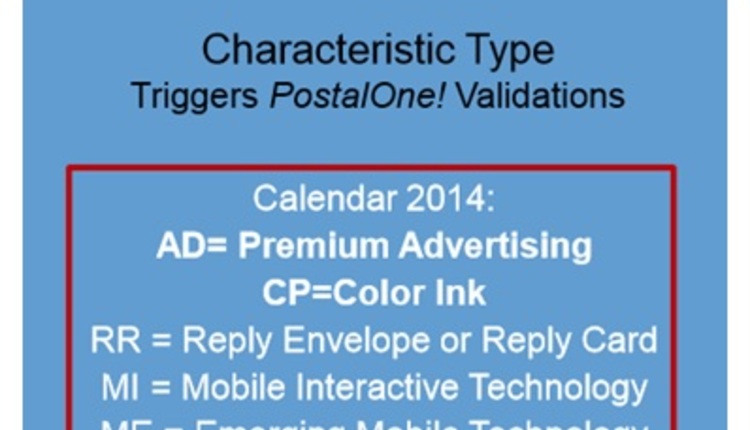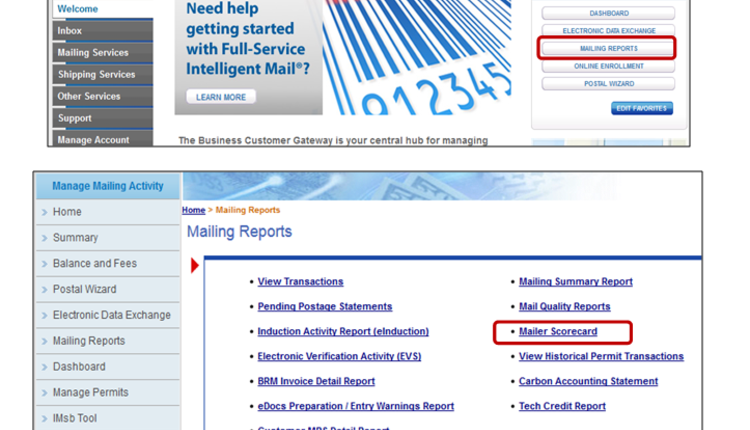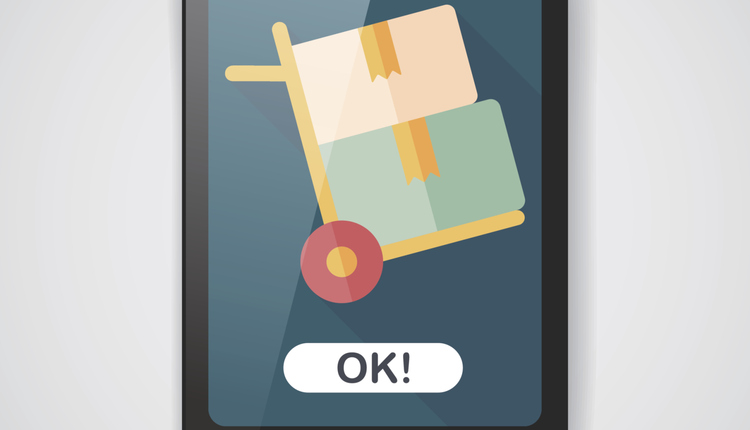Letter and flat mailers aren't the only ones affected by the Postal Service's move to the Intelligent Mail barcode. In order to increase mail visibility and overall efficiencies, mailers who ship parcels and packages are also subject to these requirements as more classes and types of mail require use of a certified Intelligent Mail Package Barcode (IMpb).
What is IMpb?
In January 2013, the USPS replaced the Confirmation Services barcode with the Intelligent Mail Package Barcode (IMpb) for tracking parcels and for the use of Extra Services. The barcode includes the customer account (Mailer ID or MID), ZIP Code routing, payment channel information, class of mail and service combination of the mailpiece.
The IMpb Isn't Just About Tracking
The IMpb's purpose is similar to that of the Intelligent Mail Barcode (IMb) used for Letter and Flat-sized mail, but the resemblance ends there. It looks much different and is designed specifically for parcels. Similar to the Mail.dat or Mail.XML requirements for proper use of the IMb, the USPS requires mailers to submit an electronic Shipping Services File (SSF) for any piece with an IMpb barcode, which includes - but isn't limited to - pieces requiring tracking and/or extra services. On January 26, 2014, the USPS made these requirements mandatory to qualify for commercial prices, unless you have an unexpired exception. Our understanding is that these exceptions expire in January of 2015. Important: You can't avoid using the IMpb simply because you don't need tracking.
What Is an IMpb Compliance Threshold?
The USPS has been charging a non-compliance fee for IMpb mailings since February 2014. This fee is $.20 per piece for mailings that don't meet IMpb requirements; this can add up in a real hurry if you mail any sort of volume at all. The compliance threshold to avoid those fees is increasing as well. So, if you haven't already done so, you need to get certified to use the Intelligent Mail Package Barcode (IMpb), stay compliant, and keep track of your IMpb thresholds in order to avoid non-compliance surcharges.
Who Does This Impact?
If you ship/mail First-Class Package Services, Priority Mail, Parcel Select, Bound Printed Matter parcels, Standard Mail parcels, Parcel Select Lightweight, Media Mail or Library Mail parcels, these changes impact you. Effective January 26, 2014, the IMpb barcode and the electronic SSF file became a requirement for all of these types of mail. If you have not converted over to the IMpb and the SSF file for commercially priced shipments, you may be subject to a $.20 per piece non-compliance fee.
Dealing with Change
So, what do you need to do to prepare for this requirement? If you ship parcels via the USPS at single piece rates or presort rates, you should have already converted over to the IMpb or be well on your way there.
If you have not completed this certification process for each class of mail that you ship and for the printers you use to generate shipping labels, you should be working with the USPS and your shipping services or software provider to complete this certification process. If you have already completed this certification process, you should also be checking your mailing and shipping software to ensure that all the correct settings and configurations are turned on and working to make sure your shipping labels and SSF files are being generated and transmitted correctly.
If you're one of the mailers who have already been certified for eDoc and Intelligent Mail options for letter and/or flat mail, you probably can remember it took weeks to get certified maybe even a month or more. For the IMpb, it can take up to two weeks to get through all of the testing required by the certification process if everything goes smoothly, so don't delay if you have not yet started this process.
Resources
For more information on IMpb, consult Publication 199: Intelligent Mail Package Barcode (IMpb) Implementation Guide available on the USPS RIBBS web site. Also, for Electronic Verification System (eVS) users, consult Publication 205. The USPS also recently issued an Industry Alert on this topic. Mailers who are not able to make these changes should contact their Business Mail Entry Unit (BMEU) for guidance. Mailers can locate their District Business Mail Entry Unit using the locator tool on RIBBS at https://ribbs.usps.gov/locators/find-bme.cfm. Mailers may also contact the NCSC Confirmation Service Files and Labels Certification help desk at 877-264-9693 option 3 with any questions.
Jeffery Peoples is Founder & CEO, Window Book, Inc. Contact 1.800.524.0380 or email postalspecialist@windowbook.com.
What is IMpb?
In January 2013, the USPS replaced the Confirmation Services barcode with the Intelligent Mail Package Barcode (IMpb) for tracking parcels and for the use of Extra Services. The barcode includes the customer account (Mailer ID or MID), ZIP Code routing, payment channel information, class of mail and service combination of the mailpiece.
The IMpb Isn't Just About Tracking
The IMpb's purpose is similar to that of the Intelligent Mail Barcode (IMb) used for Letter and Flat-sized mail, but the resemblance ends there. It looks much different and is designed specifically for parcels. Similar to the Mail.dat or Mail.XML requirements for proper use of the IMb, the USPS requires mailers to submit an electronic Shipping Services File (SSF) for any piece with an IMpb barcode, which includes - but isn't limited to - pieces requiring tracking and/or extra services. On January 26, 2014, the USPS made these requirements mandatory to qualify for commercial prices, unless you have an unexpired exception. Our understanding is that these exceptions expire in January of 2015. Important: You can't avoid using the IMpb simply because you don't need tracking.
What Is an IMpb Compliance Threshold?
The USPS has been charging a non-compliance fee for IMpb mailings since February 2014. This fee is $.20 per piece for mailings that don't meet IMpb requirements; this can add up in a real hurry if you mail any sort of volume at all. The compliance threshold to avoid those fees is increasing as well. So, if you haven't already done so, you need to get certified to use the Intelligent Mail Package Barcode (IMpb), stay compliant, and keep track of your IMpb thresholds in order to avoid non-compliance surcharges.
Who Does This Impact?
If you ship/mail First-Class Package Services, Priority Mail, Parcel Select, Bound Printed Matter parcels, Standard Mail parcels, Parcel Select Lightweight, Media Mail or Library Mail parcels, these changes impact you. Effective January 26, 2014, the IMpb barcode and the electronic SSF file became a requirement for all of these types of mail. If you have not converted over to the IMpb and the SSF file for commercially priced shipments, you may be subject to a $.20 per piece non-compliance fee.
Dealing with Change
So, what do you need to do to prepare for this requirement? If you ship parcels via the USPS at single piece rates or presort rates, you should have already converted over to the IMpb or be well on your way there.
If you have not completed this certification process for each class of mail that you ship and for the printers you use to generate shipping labels, you should be working with the USPS and your shipping services or software provider to complete this certification process. If you have already completed this certification process, you should also be checking your mailing and shipping software to ensure that all the correct settings and configurations are turned on and working to make sure your shipping labels and SSF files are being generated and transmitted correctly.
If you're one of the mailers who have already been certified for eDoc and Intelligent Mail options for letter and/or flat mail, you probably can remember it took weeks to get certified maybe even a month or more. For the IMpb, it can take up to two weeks to get through all of the testing required by the certification process if everything goes smoothly, so don't delay if you have not yet started this process.
Resources
For more information on IMpb, consult Publication 199: Intelligent Mail Package Barcode (IMpb) Implementation Guide available on the USPS RIBBS web site. Also, for Electronic Verification System (eVS) users, consult Publication 205. The USPS also recently issued an Industry Alert on this topic. Mailers who are not able to make these changes should contact their Business Mail Entry Unit (BMEU) for guidance. Mailers can locate their District Business Mail Entry Unit using the locator tool on RIBBS at https://ribbs.usps.gov/locators/find-bme.cfm. Mailers may also contact the NCSC Confirmation Service Files and Labels Certification help desk at 877-264-9693 option 3 with any questions.
Jeffery Peoples is Founder & CEO, Window Book, Inc. Contact 1.800.524.0380 or email postalspecialist@windowbook.com.










